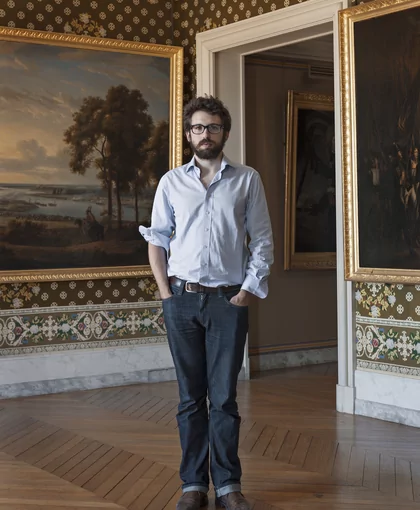Résumé
Résumé en français :
Jan Tschichold (1902-1974), typographe et théoricien de la typographie, est célèbre pour la rupture qui scinde son travail en deux corpus en apparence inconciliables selon les catégories traditionnelles de l’histoire de l’art : modernisme et traditionalisme. Dans les années 1920, il est en Allemagne, l’un des défenseurs de la « Nouvelle Typographie », conception avant-gardiste de la discipline influencée notamment par le Bauhaus. Après avoir émigré en Suisse suite à l’arrivée au pouvoir des nazis, il devient à partir de la fin des années 1930, un érudit de l’histoire de l’imprimerie, replaçant la forme traditionnelle du livre au centre de ses préoccupations. Comment expliquer cette rupture ? Nous proposons de répondre à cette question en décentrant notre regard des travaux de conception de Tschichold pour s’attacher à ses pratiques de lecture et d’écriture. Cela permet d’envisager son activité comme celle d’un professionnel intégré contraint de s’adapter à la mécanisation et l’automatisation de processus de travail autrefois artisanaux, en décalage avec l’image du créateur avant-gardiste franc-tireur dont il jouit parfois. En superposant aux outils conceptuels de l’histoire de l’art, les grilles d’analyse des historiens du livre, de l’industrialisation ou des sociologues, nous tentons d’apporter de nouveaux éléments de compréhension, non seulement concernant Tschichold, mais également le courant de la Nouvelle Typographie. De manière plus générale, nos recherches questionnent les notions de « typographie » et de « typographe », ainsi que les relations qu’entretiennent typographie, design graphique et publicitaire, peinture, photographie et architecture au xxe siècle.
Jan Tschichold and the New Typographers in Germany and Switzerland. Textual Analysis (1925-1972)
Résumé en anglais :
Jan Tschichold (1902-1974), typographer and theorist of typography, is famous for the break that divides its work into two apparently irreconcilable corpora in the traditional categories of art history : modernism and traditionalism. In the 1920s, he is in Germany, one of the “New Typography” advocates, avant-garde design discipline particularly influenced by the Bauhaus. After immigrating to Switzerland (after the Nazis came to power), he became from the late 1930s, a scholar of the history of printing, replacing the traditional form of the book at the center of its concerns. How to explain this failure ? We propose to answer this question by offsetting our view of Tschichold design work to focus on practices of reading and writing. This allows considering its work like a professional forced to adapt a craft to mechanization and automation, stepping out with the legend of the avant-gardist artist who is propagated by many books on the history of graphic design. By superimposing on the conceptual tools of art history, the analysis grids of the historians of book and printing, of the industrial revolution or the tolls of sociologists, we try to bring new elements of understanding, not only for Tschicholds career, but also the “artistic” movement of the New Typography. More generally, our work questions the notions of “typography” and "typographer" and the relationship between typography, graphic and advertising design, painting, photography and architecture in the twentieth century.
Jury :
- Mme De Smet (PARIS 8)
- M. Lugon (Lausanne)
- M. Pierre (PARIS 4)
- Mme Stavrinaki (PARIS 1)

